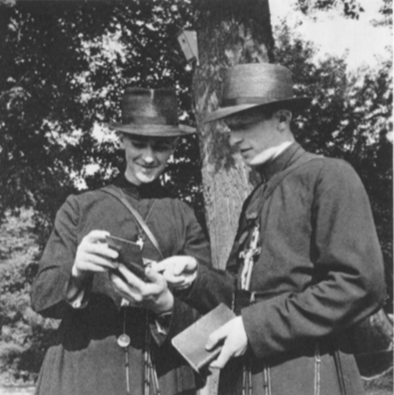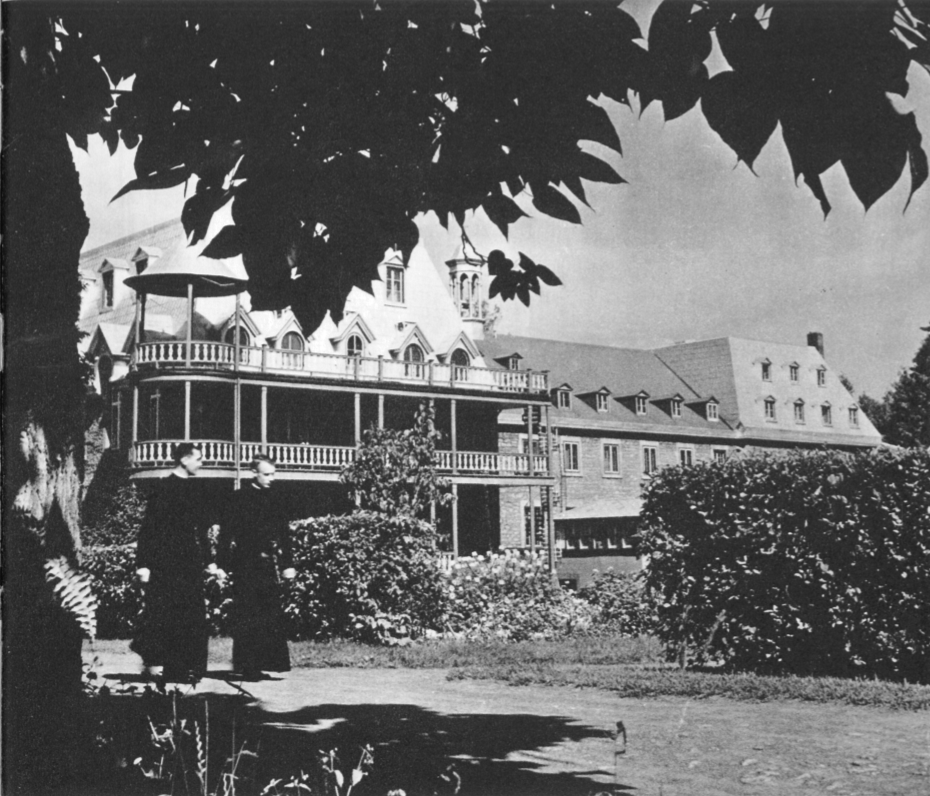
Pilgrimage is meant to be integral to the process of Jesuit formation. Mandated by the Jesuit Constitutions, a month-long pilgrimage is meant to expose novices to a penitential and transformative way of life. Other ‘experiments’ are prescribed alongside pilgrimage: the monthlong retreat of the Spiritual Exercises, menial work in service of the poor, catechetical instruction, etc. However, pilgrimage was – and still is today – the experiment most often adapted… or omitted altogether.
North America does not enjoy the rich medieval pilgrimage tradition of Europe. Some shrines are rooted in the 17th century (like that of St. Anne de Beaupré, near Quebec City), but most were developed in the 19th or 20th century and do not involve traveling by foot.
In 1864, barely 10 years after the inauguration of the Sault-au-Récollet Novitiate, the Master of Novices decided to send – ad experimentum – some novices on a pilgrimage to nearby villages and cities for a month. At first, three neighboring bishops allowed him to send his men to their dioceses. This tradition continued annually until 1968, interrupted only by the conscription in two world wars (1917, 1943, 1944).
In the North American context, it appears that this model of pilgrimage was unique to the Montreal Novitiate.
